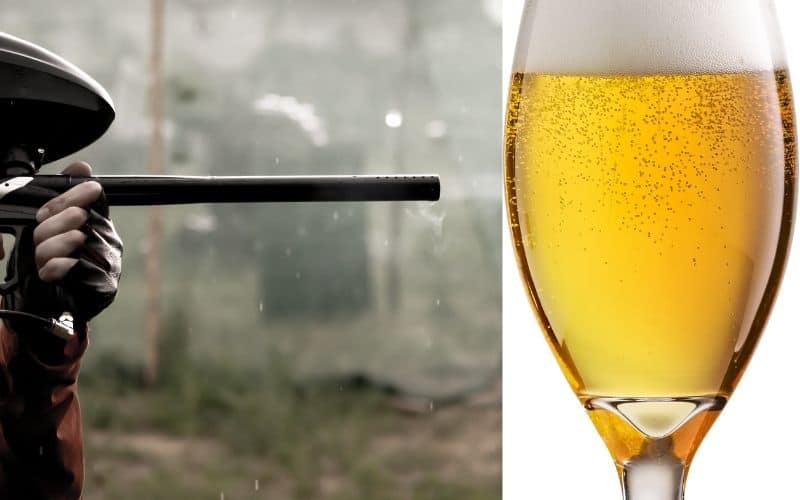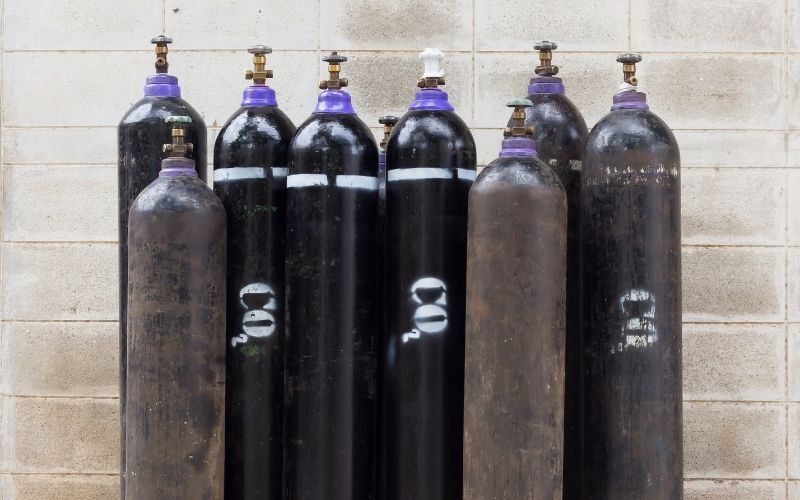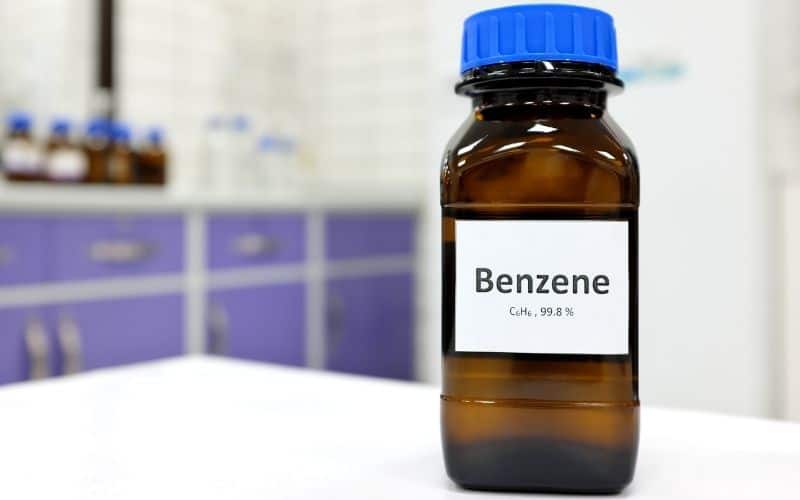Have you ever wondered about beer?
How is it made?

What process do they go through?
Why are they so bubbly?
Let’s dive deep into those musings.
If you are a beer enthusiast who wants to get their party on with some homebrewed beer, or a bar owner who’s looking to cut costs, this article is for you.
Here we cover the pressurized gas involved in brewing beer, its utility, and how you can make the most out of it.
Contents
Can I Use Paintball CO2 for Beer?
Arguably? Yes. But don’t go breaking out those CO2 canisters just yet. There is still a science to it that you need to know about.
Especially if you’re thinking about using it to push beer for others and not just yourself, let us explain.
Let’s talk about the pressurized gas itself.
What is CO2?

Carbon Dioxide, or CO2, is a naturally occurring acidic transparent gas that is incombustible. It is a chemical compound that is essential to all lifeforms on Earth.
Plants need CO2, and every other living being on the planet needs plants to survive. Plants aren’t only the primary air source, but it is also a fundamental food source. In short, we need Carbon Dioxide.
CO2 is involved in their photosynthesis process, in which oxygen is the byproduct. Our bodies can then metabolize the oxygen from plants and produce CO2 as a byproduct. It’s one of the many cycles of life of Carbon Dioxide.
You can read more extensive facts about CO2 here.
CO2 can build up indoors and cause feelings of sluggishness or suffocation. You can prevent harmful amounts of CO2 build-up by keeping your space well ventilated. Open doors, windows, and vents. You can also monitor CO2 levels with an Air Quality Monitor .
What Can I Use CO2 For?
CO2 is one of the most flexible chemical compounds. It can be added to adhesives, insecticides, even in food preservation.
The Carbon Dioxide found in tanks is compressed CO2. Depending on its compression PSI (1,500 to 2,200 PSI), it is pressurized at either high or low.

Compressed CO2 applies an appropriate amount of pressure to various things to coax other components out of its container.
It is found in fire extinguishers, spray paints, and paintball markers, to name a few.
There is also “food grade” CO2.
Food Grade CO2
FDA-approved CO2 is used in anything that involves human consumption. FDA approval encompasses all states of CO2, such as gas and liquid.
The industrial manufacturing of food and beverages that integrate CO2 in products must undergo FDA testing to be deemed food grade.
All CO2 is made equal. The FDA regulates the distribution of CO2 in food and beverages through certain compliances. If a manufacturer wants to distribute CO2 into the food and beverage industry, they must apply for FDA approval.
The FDA Compliance and Enforcement states that all CO2 intended for human consumption must have a purity level of 99.90%. This purity is attained through the handling and storage of CO2.
Some Industrial CO2 has a purity level of 99.95%, which exceeds the FDA requirement for food-grade CO2. The average industrial CO2 purity level is at 99.5%, which isn’t far off either.

You can read more of the FDA regulations related to food-grade CO2 here.
Is Paintball CO2 Safe for Beer?
That is the real question.
Here lies the real danger of using CO2 that isn’t FDA approved.
The CO2 used to fuel paintball markers, such as the Tippmann Empire Basics is industrial-grade. While there is industrial CO2 that exceeds the purity level required by the FDA, the impurities within them still matter. One such impurity is benzene.
Benzene is harmful, so every homebrewer should be aware of it. It can cause allergic reactions, skin/eye/throat irritation, headaches, nausea, and vomiting. These are the possible side-effects of low-level exposure. When ingested, it is exponentially more lethal.

Some CO2 contains benzene formulated into PBB, Polybrominated Biphenyls. PBB is a flame-retardant compound added to plastic and other materials. If the CO2 contains PBB or any benzene, it is considered contaminated. It is still usable for other things, such as powering a paintball marker. But never in food or beverages.
Benzene evaporates rather quickly and does not pose a threat. PBB is the unit of measurement for benzene.
When we are outside, we get exposed to at least 0.02 up to 34 parts of benzene per billion parts of air.
High-level exposure isn’t too high either. The acceptable level of benzene in industrial tanks is only up to 20 PBB.
The acceptable amount of benzene in food-grade CO2 is 0 PBB.
Others claim to have used it in their homebrewed beer and that the levels of benzene were harmless enough. However, one account does not speak to fact. Tolerance for benzene varies from one individual to the next.
Consider all the variables:
- Amount of benzene in the particular CO2 tank
- Level of tolerance the person has against contaminants
- Amount of contaminated CO2 added to the beer
It is too much hassle for too little payoff.
Given the industrial canisters are also not built the way food-grade canisters are, you risk contamination for both ends.
The valves in food-grade canisters are designed to produce output and restrain input. That way, any elements of the food or beverage you use the CO2 on do not penetrate the canister. This prevents rendering your CO2 tank useless and your food from going bad.
Beer kegs powered by industrial CO2 tanks tend to go flat the day after. Any pushback toward the canister or the contaminants in the tank can cause this.

While it is essentially possible to substitute food-grade CO2 for industrial ones, it is neither wise nor safe. You will be throwing more money out the window with the potential waste of resources and the medical bills it might rack up due to its health risks.
Final Words
It is inadvisable to switch out food-grade CO2 for anything less.
FDA-approved CO2 is not substantially more expensive either.
You would be saving more in the long run by sticking with food-grade materials in brewing or pushing your beer.
Opt for trustworthy materials to brew your beer. You can check out the BACOENG Kegerator Its recently updated CO2 regulator uses up to 35% less CO2, giving you more for less.
Are you starting your journey in homebrewing your beer? We think having the Northern Brewer - Essential Brew is an excellent place to start.
You can also watch this step-by-step video.